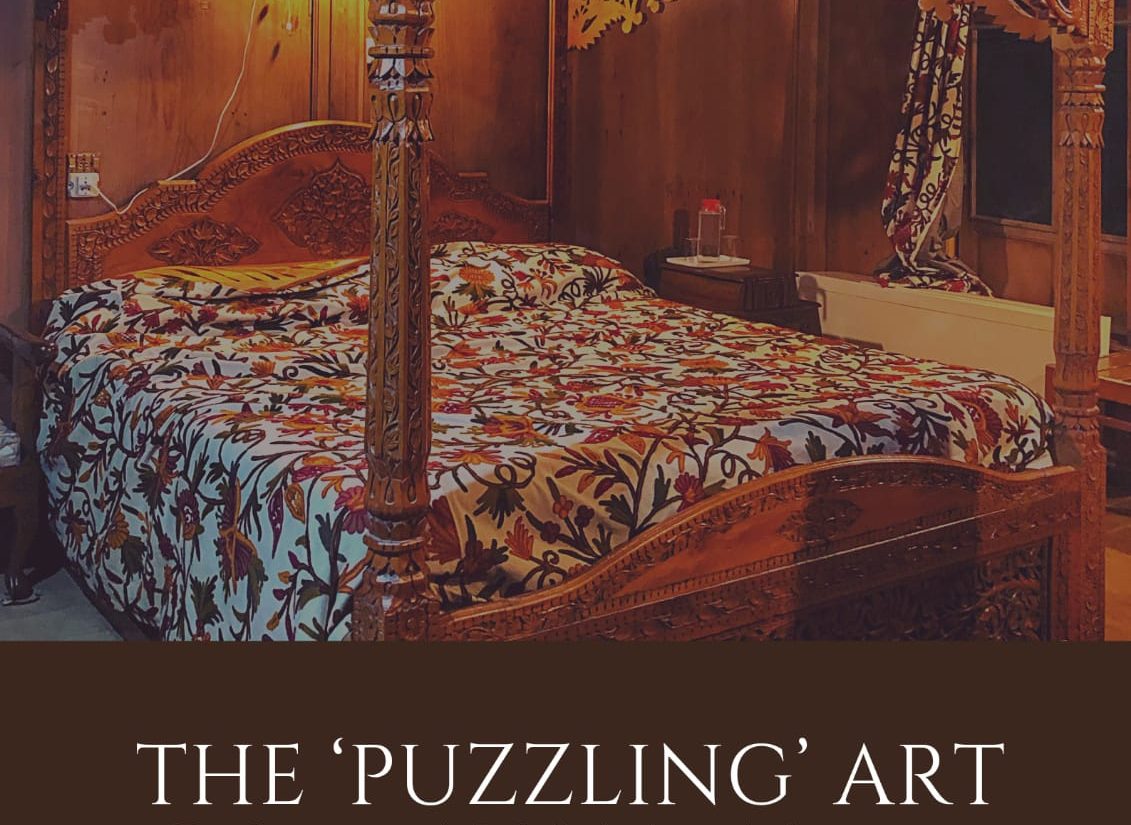
Article by EIH Researcher
Nandini Rawal
Kashmiri cultural heritage boasts of a unique intermingling of different arts and traditions, which is reflected in the various arts and crafts of the region. One such unique art of the region is the Khatamband, the traditional art of making wooden ceilings by assembling hand-cut geometric pieces of wood. It is believed that Khatamband was brought to the valley by the famous saint Shah-I- Hamdan who visited Kashmir with his followers in the 14 th century CE. Among his followers were Khatamband artisans from Iran and Iraq who passed on this art to the local Kashmiris. Safa Kadal in Srinagar became the hub of this craft form. This woodwork art flourished in Kashmir due to theabundance of trees growing in the region and forms an iconic part of the Kashmiri heritage.
The elaborate patterns of Khatamband are made using fir, walnut or deodar wood which are all manually cut and assembled to make the ceiling. The fascinating part of this art form is that it uses no nails or glue to hold the pieces together. The designs are so well engineered that all the pieces fit together like pieces of a jigsaw puzzle. The Persian term ‘khatambandh’ loosely translates to closed polygons where ‘khatam’ means an enclosure like a polygon and ‘bandh’ means close. The geometrical or polygon pieces, also called ‘posh’ (flower), are held together by beadings called ‘gaj-patti’. This clever joinery makes the ceilings appear seamless and makes these ceilings easy to disassemble and reassemble. The polygonal patterns are inspired by Persian motifs and comprise different shapes such as the ‘Muraba’, ‘Badam’, ‘Kansut’, ‘Lakut’, and ‘Bod’. Combining these patterns makes a unique Khatambandh design like the ‘Muraba Badam’, ‘Panch Muraba’, ‘Char Phool’ etc. Traditionally more than 160 designs of Khatambandh were used, out of which only 10-30 patterns are popular for commercial use now. Earlier the geometric patterns would also feature delicate floral carvings.
Earlier, this exquisite craft was a status symbol used to adorn the ceilings of shrines, palaces, houseboats and royal houses. Most houseboats on Dal and Nigeen lake flaunt these stunning khatambandh ceilings. It was considered a luxury artform owing to the time and painstaking effort it took to complete one single ceiling. Apart from its aesthetic appeal, the khatambandh also acted as insulation against the harsh Kashmiri cold, making it popular among the opulent Kashmiris. This expensive craft form saw a decline during the nineties and was gradually fading away. Fortunately,
the craft was revived by the early 2000s as people realised its cultural value and started adopting it to adorn the ceilings of their halls and bedrooms to reflect their rich Kashmiri heritage. Nowadays, Khatamband ceilings are used in hotels, restaurants and houses. The popularity of these wooden ceilings has reached Western countries too. Khatambandhi was awarded the Geographical Indication certificate in 2011,underscoring its exclusivity.




















